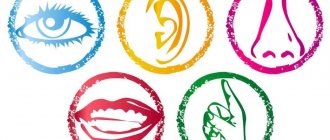What it is
Stereotyping began to be considered in the 20s of the twentieth century. Stereotypical thinking is characterized as a narrow paradigm that is stored in the head to save effort required when perceiving certain complex situations and phenomena. Researchers have identified two reasons for the formation of such patterns: the economy of the mind and the desire to preserve the values of a particular group.
This kind of standardization has the following characteristic features:
- sustainability;
- selectivity;
- emotional basis.
Simply put, people use stereotypes so as not to bother themselves with additional thinking. When they manage to find confirmation of their thoughts in the behavior of others, they become even more convinced of the truth of their own or collective conclusions. Stereotyping is a certain replacement for mental activity.
To one degree or another, each of us is subject to such beliefs, with the only difference being that some truly firmly believe in such “postulates,” while others are able to question them.
Various kinds of prejudices influence a person’s worldview, his behavior and encourage a distorted vision of reality. Patterns can be imposed by society or arise based on personal observations. The former are more harmful, since they impose an incorrect way of thinking on the individual and do not allow him to analyze the situation objectively and independently.
But still, without stereotyping, society could not exist. It allows consciousness to build important patterns:
- water may wet;
- it's cold in winter;
- the flame burns.
Knowing this, we do not need to verify our assumptions in practice every time. However, there are stereotypes that affect a person’s consciousness and subconscious, preventing him from living.
You should learn to distinguish prejudices from the real state of affairs. The same concept can be dictated by the internal motivations of an individual or imposed on it by society. In the second case, the individual feels a conflict between his interests and what public opinion requires of him. The desire to follow stereotypes imposed from the outside distorts the vision of the real.
Often we judge others not by their actions, but by what others say about them. For example, a person who occasionally attends church may assume all the characteristics of a real Christian, although in fact this is not the case at all.
Reasons and processes of formation
Stereotyping is, in psychology, the formation of judgments through the interaction of elements of the psyche. Stereotypes appear when referring to individual or group life experiences. The formation of stereotypes occurs in the second signaling system and includes 3 phases.
| Phase | Description |
| Initial | Individual visual and speech stimuli act on the signaling system and interact with verbal and visual images in the higher parts of the brain. As a result, a holistic idea arises, which consists of formed forms of consciousness and associations. |
| Search response phase | Incoming images are correlated with existing ideas and are recognized as original. At the same time, the saved model ceases to be blurry, but acquires a specific character and is filled with details. |
| Recognition | The stored information for a stereotype is contained in the form of an association. Parts of perception upon contact with a stimulus are excited and generate various images, feelings, symbols from which a stereotype is created. |
W. Quasthoff noted that the functions of stereotypes are necessary for the normal functioning of the psyche and consciousness - social existence, internal psychological stabilization, and information processing.
The process of stereotype formation involves such mental actions as attribution, categorization, selective attention, concept formation, and evaluation. The stereotype is based on 3 components:
- cognitive – a person is aware of information about objects;
- affective – expresses evaluative feelings about objects;
- social – shows a program of actions in relation to objects.
Stereotypes arise for various reasons. The main one is protecting the brain from overload with information. The mechanism of stereotyping is based on simplifying the thought process. The psyche does not react to stimuli with all the fullness of experiences every time, but transfers them to already learned models. A constant flow of new information loads the brain, so the body independently classifies incoming stimuli, fitting them into familiar images.
Thus, the process of cognition does not exceed the ordinary level, relying on everyday experience formed through the generalization of ideas. At the same time, the surrounding world itself contains similar, monotonous, repeating elements to which a person reacts with stereotypical actions. Refusal of stereotyping would lead to constant work of the psyche to differentiate and classify information. Thus, template thinking simplifies the knowledge of the world and facilitates the work of thinking.
Stereotypes are learned through enculturation and socialization. The patterns themselves are part of the culture. A person remembers many groups of stereotypes from childhood and takes them out of his family and environment. The consolidation of images occurs at the age of 12-30 years, after which they practically do not change. As a result, the finished models reflect the understanding of not only their own group, but also the understanding of other groups about their own.
The formation of images occurs in communication with loved ones who are most often present in life. These are family, friends, teachers, colleagues. But sometimes stereotyped thinking also manifests itself in private contacts. For example, if a person is cheated on a market by a seller of a certain nationality, then in the end the buyer will transfer his judgment to all persons of this nationality.
The media also participate in the assimilation of stereotypes, since for many people they are an authority. Opinions broadcast in the media often crowd out personal beliefs.
This happens for several reasons:
- If a person does not have sufficient knowledge about the subject of discussion, then he relies on information from the news or newspapers without critically evaluating it.
- The status of the source plays an important role in the stereotyping process. The judgment of a famous public figure or politician is considered more significant.
- Relying on the opinion of the media indirectly removes responsibility for decisions made. A person accepts the point of view of an authoritative source and considers it correct and fair.
Stereotyping effect
This is the process of the emergence of a stable belief or image, when, based on one’s own or social practice, a person fixes in the mind some picture of the world.
When encountering a previously unknown phenomenon, the brain begins to analyze the situation and look for something familiar in it. The resulting settings compare a new object with a similar group, which allows you to quickly classify data and, if necessary, retrieve it from memory.
general characteristics
Various social communities, ideal (professional) and real (nations), develop stable explanations for certain facts and create habitual interpretations of phenomena. This process is quite logical, since stereotyping is a useful and necessary tool for understanding the world. With its help, you can quickly and at a specific level simplify a person’s social environment. In this way, things become understandable and therefore predictable. The mechanism of stereotyping is associated with the limitation, selection, and categorization of a huge amount of social information that concerns a person every minute. The motivation for this instrument is evaluative polarization directed in favor of one’s own group. It gives the individual a feeling of security and belonging to a specific community.
Features of stereotypical thinking
Thinking in patterns means not logically justifying information when receiving different experiences, but comparing what is happening with what has already been deposited in the mind. Thus, the world becomes safer for the mind, since it is subject to a certain order.
Psychologist Daria Milai
Make an appointment
Stereotypes can be formed from childhood. These are beliefs, values, norms, reactions, assessments that a child absorbs from adults. When the mind is subject to stereotyping, it interferes with the full and comprehensive development of the personality. Independence and objectivity of views disappear.
Patterned behavior is most often encouraged by society. In other words, when a person lives like everyone else, he does not strive to show individuality - it is so simple, calm and comfortable.
Prejudices allow you to act “automatically” and prevent you from looking at the situation from a different angle. Stereotypical processes presuppose the presence of an attitude: to act only this way and not otherwise. Someone whose behavior is determined by stable patterns has a hard time accepting new things, treating them with distrust and even aggression, since unknown information disrupts internal balance and comfort. He has a specific, proven model of action, and he follows it.
In-group favoritism
It represents a tendency to favor members of one's own group in comparison with other groups. Simply put, “ours are better than not ours.” This explains the fact that in a foreign city people are very happy with fellow countrymen, and in another country - with compatriots. However, this phenomenon does not always occur. Favoritism is not characteristic of every group, but only of those that are developing successfully, have a positive system of internal values, and are distinguished by cohesion. In teams where there are conflicts, disintegration, and restructuring of goals, there may be no time for favoring tendencies. Moreover, the exact opposite phenomenon is also possible. It will manifest itself in favoritism towards members of the other group.
Advantages and disadvantages
Pros:
- automatic thinking, which helps in everyday matters;
- the ability to group objects and phenomena, facilitating the thought process;
- “pass” to one or another group of society.
Minuses:
- lack of freedom of thought and action;
- development slowdown;
- patterning prevents you from accepting new things and learning;
- the occurrence of errors when the situation is not similar to the usual one, and the individual cannot move away from a stable image;
- gullibility, inability to conduct a critical analysis.
Functions
G. Tajfel identified four tasks that stereotyping solves. This:
- Selection of public information.
- Formation and maintenance of a positive “I-image”.
- Creating and maintaining a group ideology that justifies and explains its behavior.
- Formation and maintenance of a positive “We-image”.
The first two functions are performed at the individual level, the latter at the group level.
Types of stereotypes in psychology
- Patterns of perception.
- Ethnic.
- Gender.
- Age.
- Social.
- Attitudes in communication.
- Heterostereotypes.
Stereotyping can be superficial or deep. In the first case, we are talking about beliefs formed by an unfounded assessment of various external characteristics: the emotionality of Italians, the perfectionism of Germans, the laziness of Russians. As a rule, they change due to the development of mankind.
A deeper version of patterning involves patterns of behavior and thinking that are transmitted between people over years or even centuries. For example, many consider the balalaika, matryoshka, vodka and bears to be essential elements of the Russian tradition.
Face-to-face consultation
What are the features and advantages of face-to-face consultation?
Find out more
Skype consultation
What are the features and benefits of Skype consultations?
Find out more
They are formed under the influence of certain historical events.
Examples of popular stereotypes in society:
- it is impossible to achieve success in a career without “pull”;
- a man never cries;
- children are dependent, helpless;
- Jews are a mercantile people;
- a woman on a ship is a bad omen;
- the higher the price, the better the quality of the product;
- You cannot live with dignity without higher education.
It is believed that the girl is weak, passive and frivolous. She is often perceived as an “appendage” of a man. To compensate for her natural inferiority, she must strive to look more beautiful than everyone else and cunningly capture a rich and attractive husband. Then you need to give birth to children and live off your patron. A lady does not need to be strong or occupy high positions. Otherwise she will feel unhappy.
Representatives of the male sex have also acquired their own stereotypes. There is a common belief that a priori are the main ones in a relationship. Another illusion is that every guy loves football, is obsessed with sex, and they are also terrible womanizers. “All men cheat!” – you’ve probably heard this statement more than once.
Parents are convinced that children should meet their expectations. All teenagers are considered difficult, and their dreams and plans are not taken seriously, attributing their impulses and ideas to “youthful maximalism.” Middle-aged people are in a state of crisis. Old people are sick and unhappy. Young people think only about entertainment and do not respect their elders. Unemployed people are losers, and happiness is impossible without a huge bank account. Not believing in God is madness. Society is replete with stereotypes about what is “good” and what is “bad”, what a “normal” person should be, how and where one can obtain the “correct” knowledge. However, most of them are associated with fears, complexes, weakening of analytical thinking and are not supported by logic.
Social stereotypes
A social stereotype is a generalized idea of people, phenomena or events, formed at the level of society. This opinion is often erroneous, because it is formed in conditions of a lack of information. The human mind is not able to comprehend all areas of life, much less study them thoroughly. Therefore, society often gives labels: people with a high forehead are smart, long fingers are a musician, people with glasses are a nerd, and so on.
Social stereotyping often fails, but many people continue to use such pithy statements in everyday life. Stereotypes are specific; they help save time in the process of learning about the world. They can be positive or negative, often taking precedence over common sense and logic.
What are stereotypical attitudes?
Below I will describe in more detail the most common models that exist in the social paradigm.
Gender stereotyping: women and men
- A girl is an emotional, unreasonable, weak creature. Her mission is to give birth, run the house and take care of the man.
- Every girl needs to learn how to apply makeup, dress beautifully and behave properly around boys, in order to later find someone who will fully provide for her and her children.
- Strong ladies are usually loners.
- A single mother is an unhappy, abandoned victim.
- A business woman has no time for family values.
- A man should be a little more handsome than a monkey. His task is to earn money to provide financially for the woman. They don't need love, they only want sex.
- Representatives of the stronger sex should not express their feelings or perform “feminine” duties: cooking, washing.
- A real man must work, support his family, and drive a car.
The above examples of common stereotypes show that many people do not see an individual personality behind a particular person. Due to the huge number of cliches that we receive in childhood, problems arise in relationships: partners are simply not able to hear and understand the position of the other half.
During my consultation, you will be able to destroy many illusions regarding energy. You will find your resource state, realize your own importance and move to a new level of development of your individuality.
Children
They are obliged:
- Listen to adults in everything.
- Fulfill the unrealized plans of parents.
- Get good grades in school.
- Go to university in agreement with mom and dad.
- Don't be smart.
At the same time, it is believed that all kids are ugly, they cannot be trusted with anything, they break and spoil things. The younger generation is dissolute, stupid, young people are not aware of what they are doing.
Happiness
The essential elements of a happy life are:
- Money.
- A dream come true.
- High social status.
But in fact, each person has his own system of coordinates, values and desires. You have the right to decide for yourself what is important to you.
"Correct"
- Only in elite universities can you get a good education.
- “Normal” people get jobs regardless of their desires. You don't have to like the activity.
- You need to live in your homeland, and not move to another country.
- It is necessary to follow trends.
- You need to dress in expensive stores.
- You cannot live without faith in God.
- The opinion of an individual must correspond to the position of the majority.
Negative influence and harm
Stereotyping is a form of perception of people or objects in psychology. The negative role of a stereotype is that such ideas are often based on false subjective information. Templates are used to mislead or manipulate people. Stereotypes introduce disagreements into communication and give rise to conflicts.
False ideas disrupt the understanding of correct life guidelines and set a person against others based on their gender, race, or appearance. Instead of finding similarities, stereotypes focus on differences and divide society into “us” and “outsiders.”
In addition, negative stereotypes often become the source of stigma, discrimination and xenophobia. Such attitudes arise in people who use templates out of fear of losing their social identity. Through negativism and intolerance, they strengthen their position in the group they occupy and feel psychological comfort.
What are modern professional stereotypes: examples
These include average images of a follower of a certain profession.
Ask a question
Policemen
These clichés are fueled by various films and TV series. They arise due to the rare contact of ordinary people with law enforcement officers. The most common speculations:
- every employee is brave and selfless;
- on missions, law enforcement officers constantly fight bandits;
- Moreover, all police officers take bribes.
Doctors
- They don't get sick.
- Regardless of the profile, a good doctor knows the recipe for any disease.
- A real specialist always carries a first aid kit with him to provide first aid to a person on the street or in a public place.
Lawyers
- They always wear a suit.
- Too many people enroll in law school, and it’s difficult for graduates to find work.
- They earn a large amount.
Difference from prejudice
These two concepts are similar, but at the same time they have differences.
The first term, stereotype, is a kind of generalization, often of a collective nature , that is, a group of people is convinced of the existence of a certain phenomenon.
For example: all Russians are lazy. A person may not even understand why he agrees with certain stereotypes, but he believes and accepts them.
Prejudices are more personal in nature , often appearing after an individual has gone through difficult events.
A woman has been abandoned by a man, and she begins to believe that the entire stronger sex has a set of negative traits and should stay away from men.
A person may be aware of the presence of specific prejudices and be critical of them.
Read about the types of people's attitudes towards their illnesses here.
How do they form?
Patterns pass from one generation to the next. Already in childhood, parents lay down norms of behavior in us, teach us how to act and think correctly. People are greatly influenced by the society and cultural characteristics of their country of residence. These clichés help to adapt to life in society, but dependence on stereotyping leads to the fact that a person does not develop fully; it is easier for him to act and think as is customary than to take risks and encounter new life models.
How they change and what it depends on
Over time, stereotypical behavior changes its vector. What was once unacceptable is now commonplace. This can be observed in the example of the transformation of people’s attitudes towards the institution of marriage.
The change in the role model of women is also obvious. Now she can move up the career ladder on an equal basis with a man and occupy positions that were previously considered exclusively male.
Physiognomic reduction
In its essence, it is an attempt to assess the internal psychological characteristics of a person, his actions and predict his actions based on the typical appearance features of his group. This mechanism functions very actively in interethnic interactions. Physiognomic reduction also works very successfully in the simplest social relationships.
Role in the life of the individual
To carry out this or that activity, an individual needs to process information and analyze it. In addition, it is important for him to feel part of a certain community.
However, more often than not, stereotypical thinking greatly limits people and prevents them from expanding their horizons. Because of our patterns, we miss a large number of opportunities, do not pay attention to prospects, and make mistakes in assessing those around us.
Definition of the concept
What is a stereotype? A stereotype in a broad sense is an established pattern of behavior , a cliche, a prejudice.
Often stereotypes have nothing to do with reality; they are created by people’s thinking based on superficial data.
The word consists of two: “stereo” - “solid” and “tipos” - “imprint”, literally an imprint in our brain of a certain concept.
Beliefs may concern a specific group of people, for example, the presence of a specific characteristic of race, behavior, traditions. Often lead to erroneous perceptions.
How to fight stereotypes
On the one hand, templates help relieve the mind from excessive stress. But at the same time they become limiters of thought.
- You should not blindly believe everything that is accepted in society. Check the data received from outside and draw conclusions based only on your own experience.
- Highlight those behavior patterns that exist in you, but have not been practically confirmed. Try to prove them or abandon them.
- Find a refutation of those attitudes that have no factual or logical basis.
How to disobey and get rid of
Stereotyping is a formed image in psychology that manifests itself in response to a specific stimulus. To get rid of the influence of stereotypes, you need to consciously work on yourself. You need to understand which patterns and ideas are useful and accepted, and which are negative. Stereotypes that a person has formed from his own experience, without relying on the opinion of society, are considered necessary. They can also include social images, but those that the individual has passed through himself.
To do this kind of work, you need to write out the most famous representations and read them several times. Every phrase has an emotional response. It is the sensually colored sensations that show the attitude towards the stereotype. There are also several methods for getting rid of stereotyping.
Stopping the stereotype
The mechanism of this method is based on stopping the structures that support the stereotype, for example, stable images and reactions, emotional and bodily fluctuations. From the very beginning, it is necessary to track such psychophysical reactions, consider them separately, and highlight the most striking ones. Therefore, the first step is observation and analysis.
For example, a stereotypical action is scratching the back of the head in response to a stimulus. Here, stopping is considered to be directed attention to the movement of the hand, which destroys the sequence of manifestation of the pattern. A separate part of this process can be called an attempt to stop the internal dialogue at the moment of the strongest resistance.
Replacing a stereotype
Consists of replacing one representation with another. As in the previous example, getting rid of a stereotype occurs according to a monotonous pattern - at the moment of manifestation of the reaction. In this case, the action must be replaced by a manifestation of a similar form.
Stereotype transformation
The stereotypical action changes through the transformation of the way of its manifestation. In this method, it is necessary to consciously seize the initiative at the moment of revealing the structures, and then endow the established elements with new properties. Using the example of a physical stereotype, transform scratching the back of the head into performing another action not related to the body.
Going beyond the stereotype
It differs from previous methods in that it does not use a direct influence on the structure of the stereotype.
The method consists of 3 stages:
- Awareness of one of the constituent parts of a stereotype.
- Awareness of all patterns' structures.
- Awareness of the integrity of the parts of the stereotype at the moment of manifestation.
Here, the response to a stimulus in the form of scratching the back of the head is experienced before the motor manifestation of the pattern. The person is aware of the playing out of the stereotype, but does not show it physically, as a result of which the action fades.
The following ways of working with stereotypes in interaction with other people are also identified:
- awareness – naming a behavior pattern;
- finding out the reasons for behavior - talking through the objective and subjective reasons for using the template;
- discussion - proof of the unproductiveness of using the template and problems in communication because of this;
- analysis – discussion of past experience on the basis of which the stereotype appeared;
- re-evaluation – analysis of the reasons for using the model and assessment of its value;
- informing – communicating complete information about a judgment;
- projection screen – ignoring the stereotype;
- switching attention - transferring attention to other stimuli;
- congruence - playing along until the influence of the stereotype ends;
- copying - repeating the behavior of a partner (sometimes it is necessary for him to notice it, and sometimes not);
- external dissociation – separation of a person from his judgment, communication only with that part that interests the interlocutor.
Stereotyping is an important process that saves brain effort and relieves the psyche. Stereotypes make it possible to navigate the world and understand the values of a particular society. At the same time, ideas in psychology sometimes carry a negative message and are perceived as insults. Therefore, you need to understand which patterns are part of your worldview and use them with caution so as not to offend your interlocutor.
Who is considered the author of this theory?
The term was coined in the 20s of the last century. The author is believed to be journalist Walter Lippmann .
He borrowed it from the printing industry. Initially, the word “stereotype” meant a printed form. It allowed the text to be reproduced many times.
Auto believed that stereotypes:
- are not developed by man, but are imposed from the outside;
- they are false;
- simplify the perception of reality;
- exist for a long time, firmly entrenched in people’s minds.
What is the difference between higher and lower human needs? Find out the answer right now.










